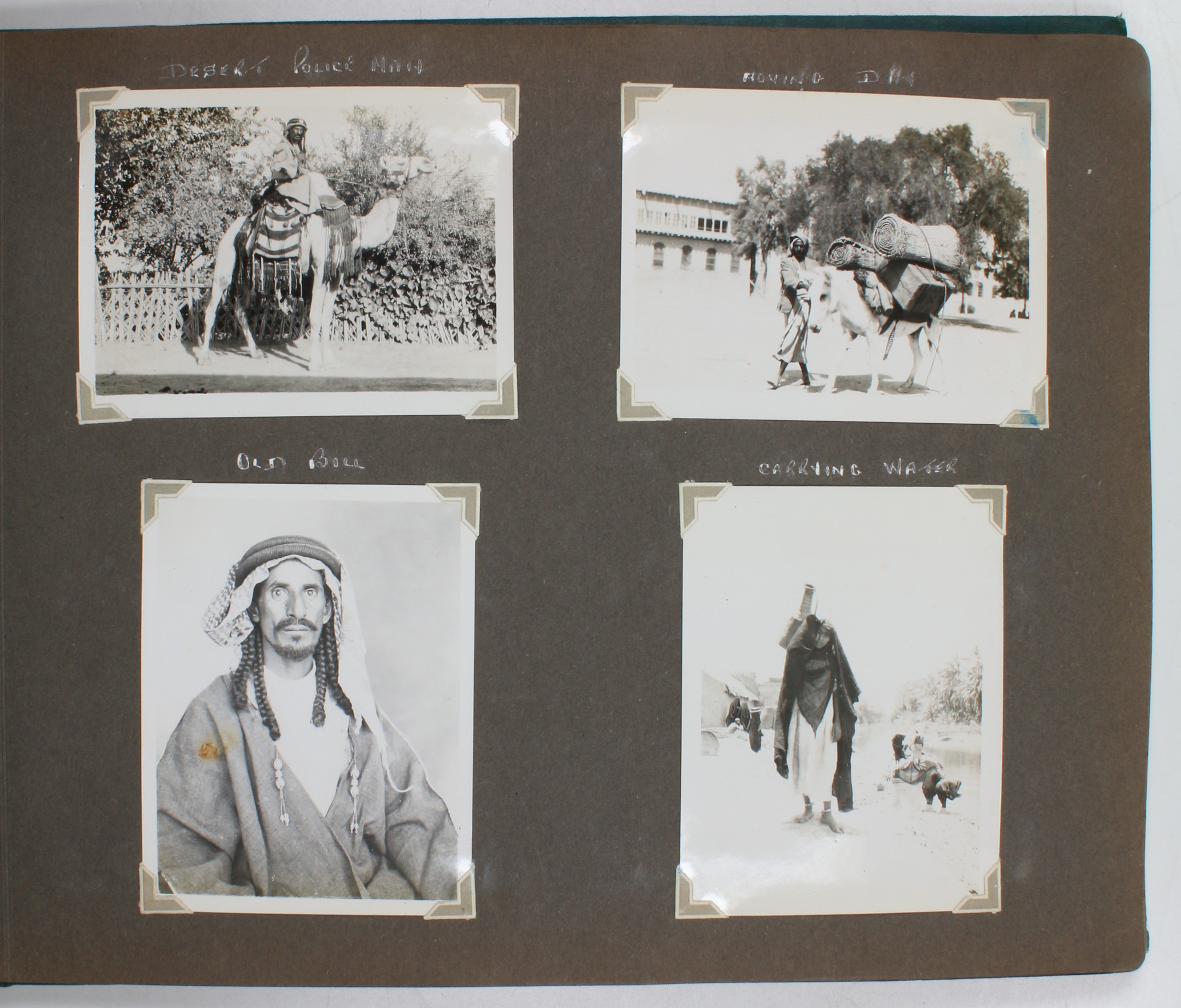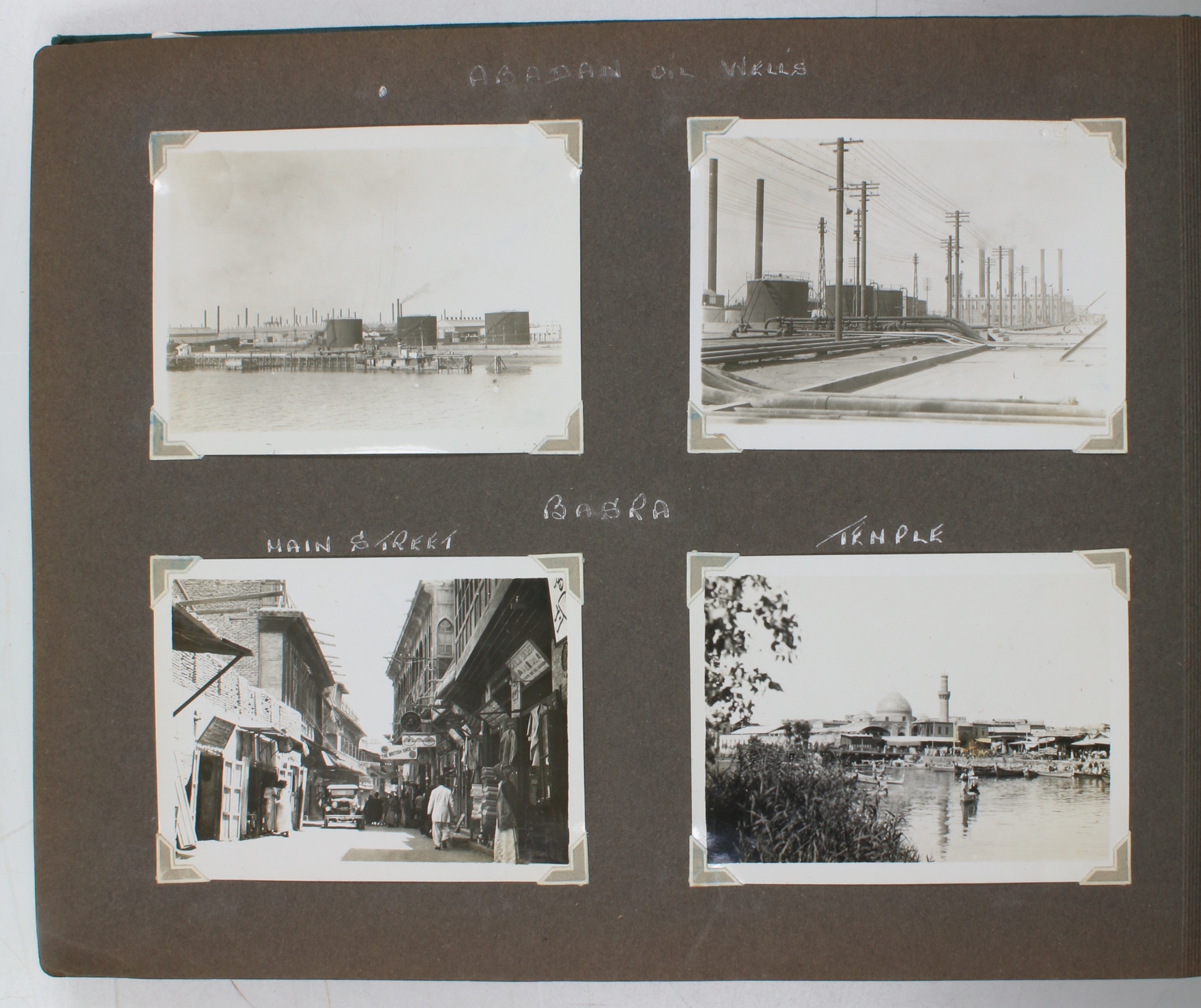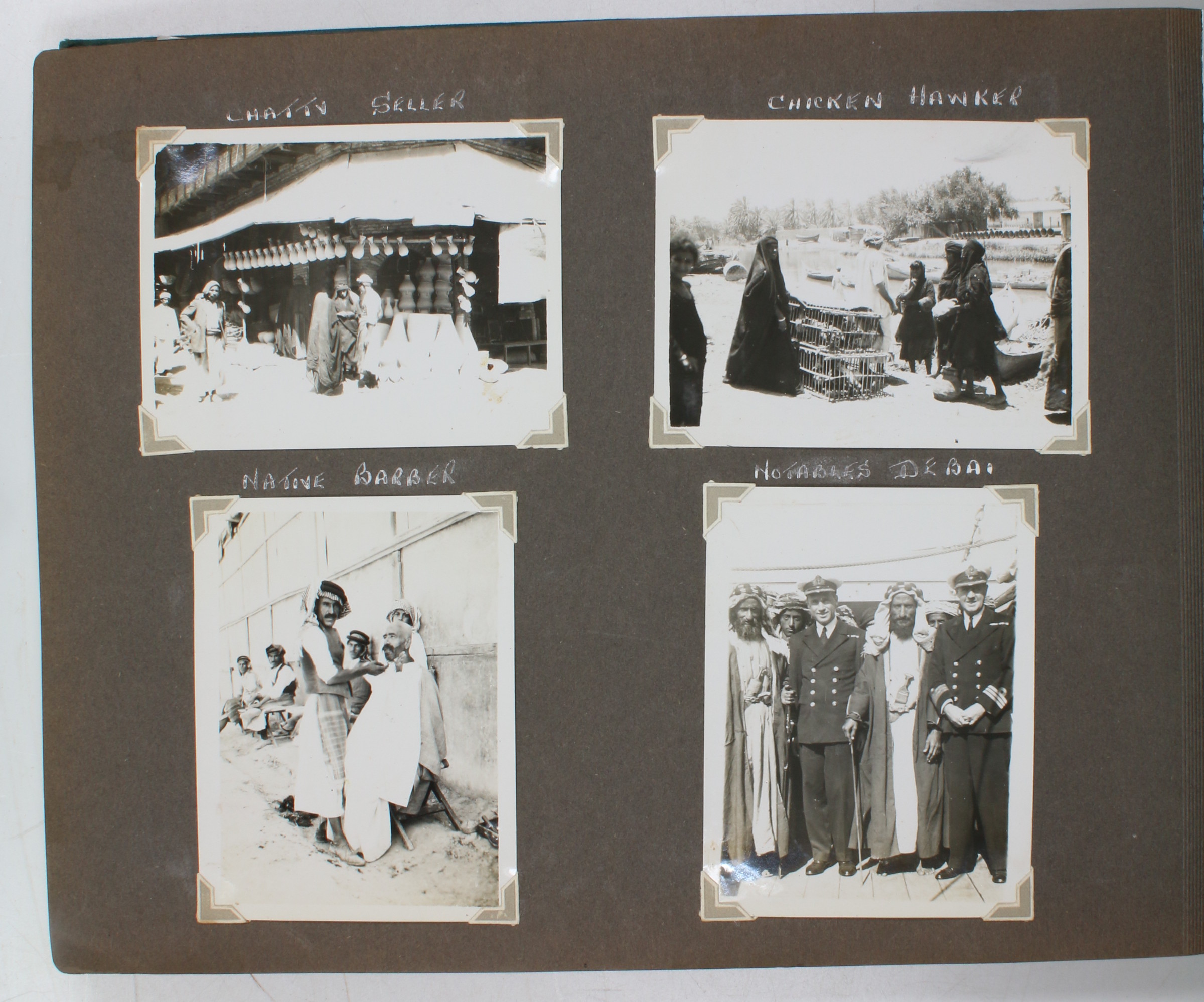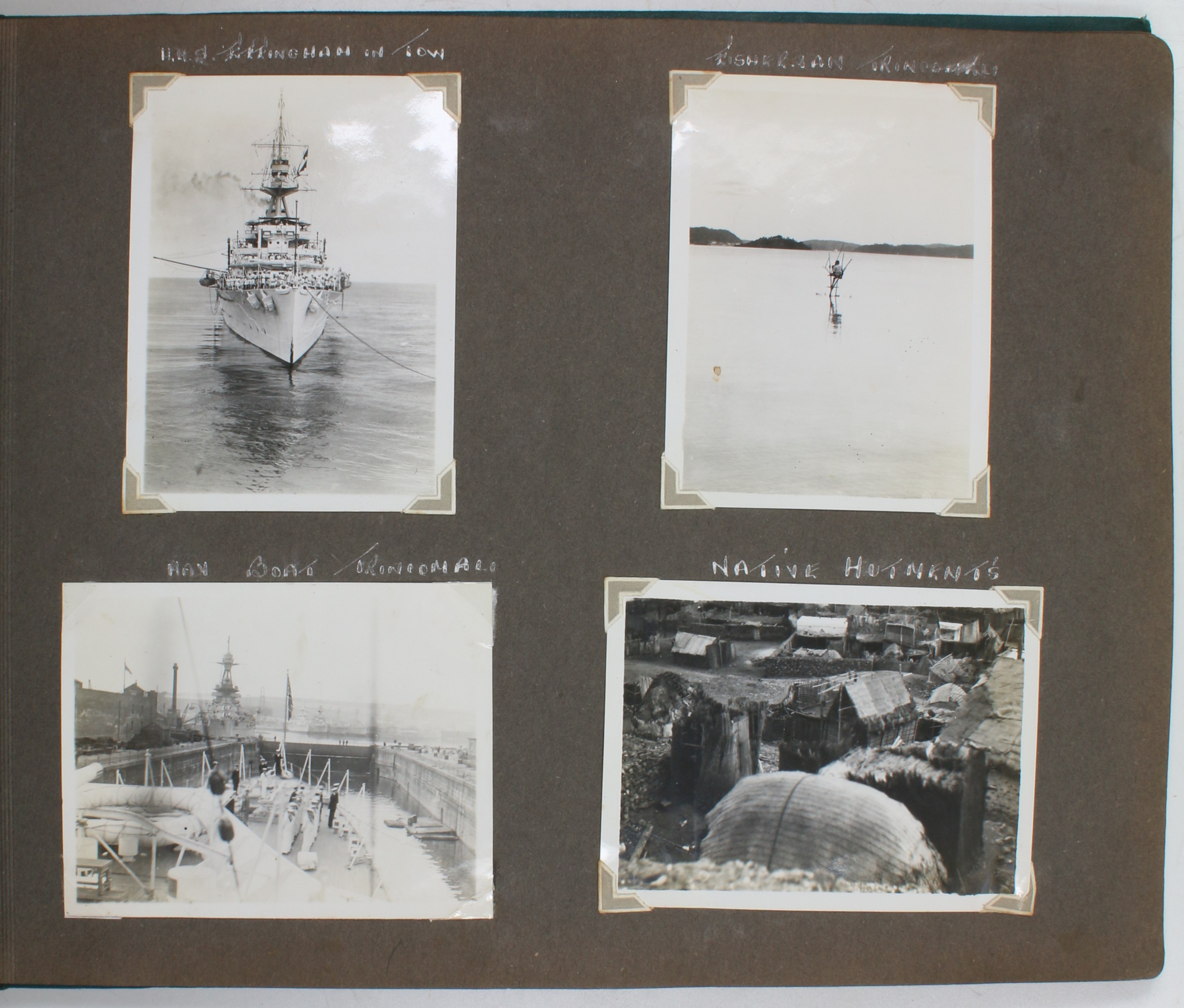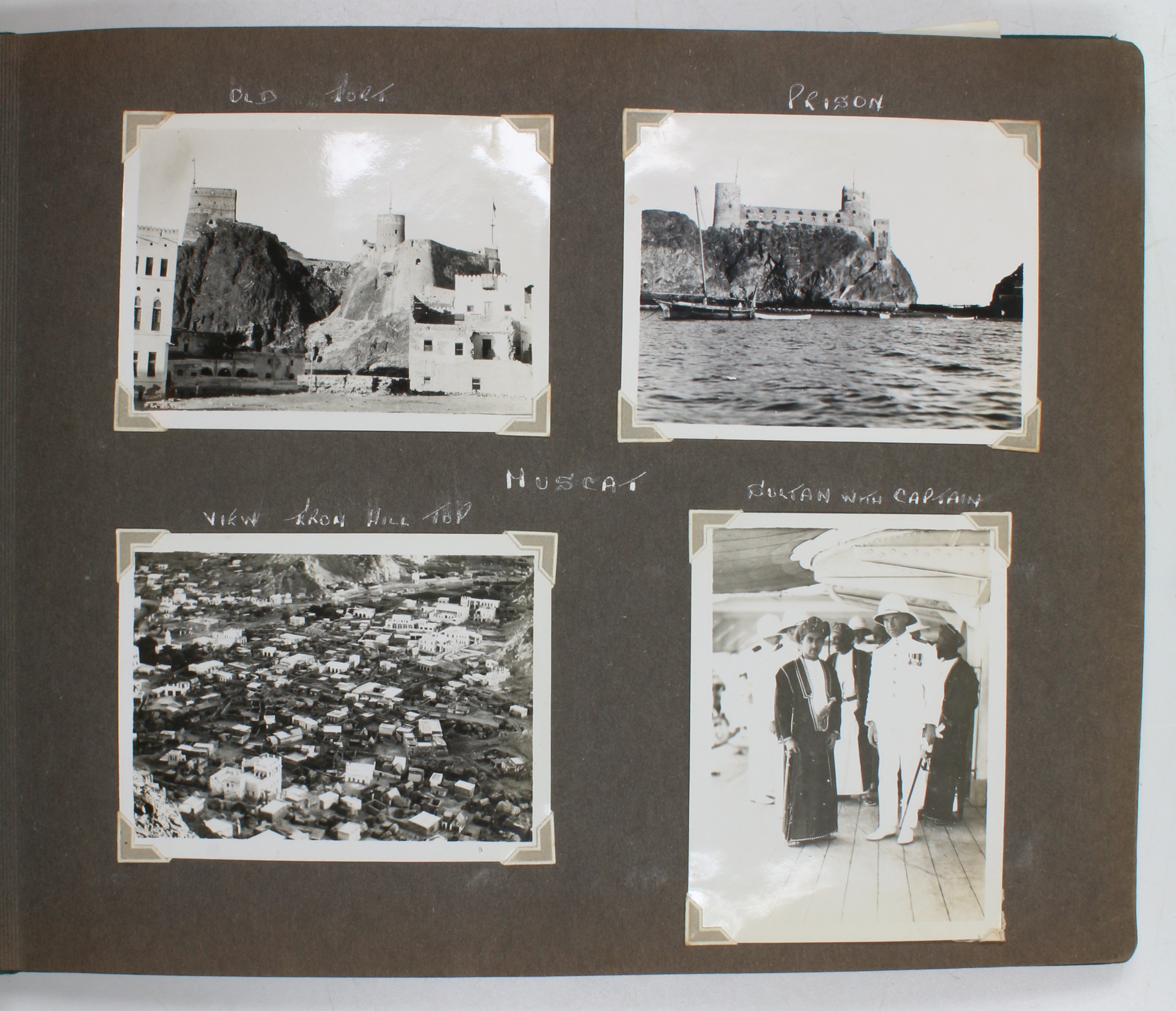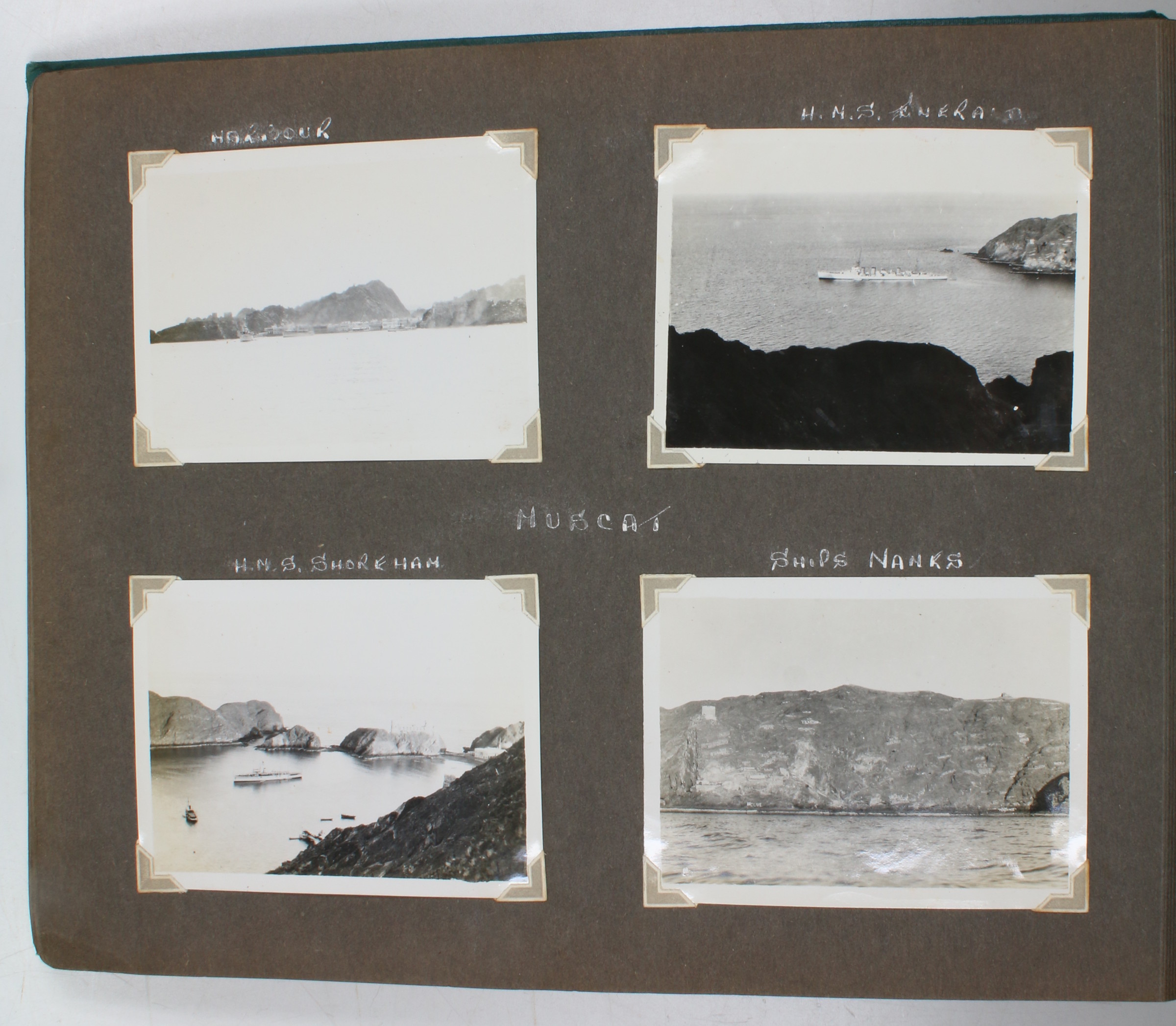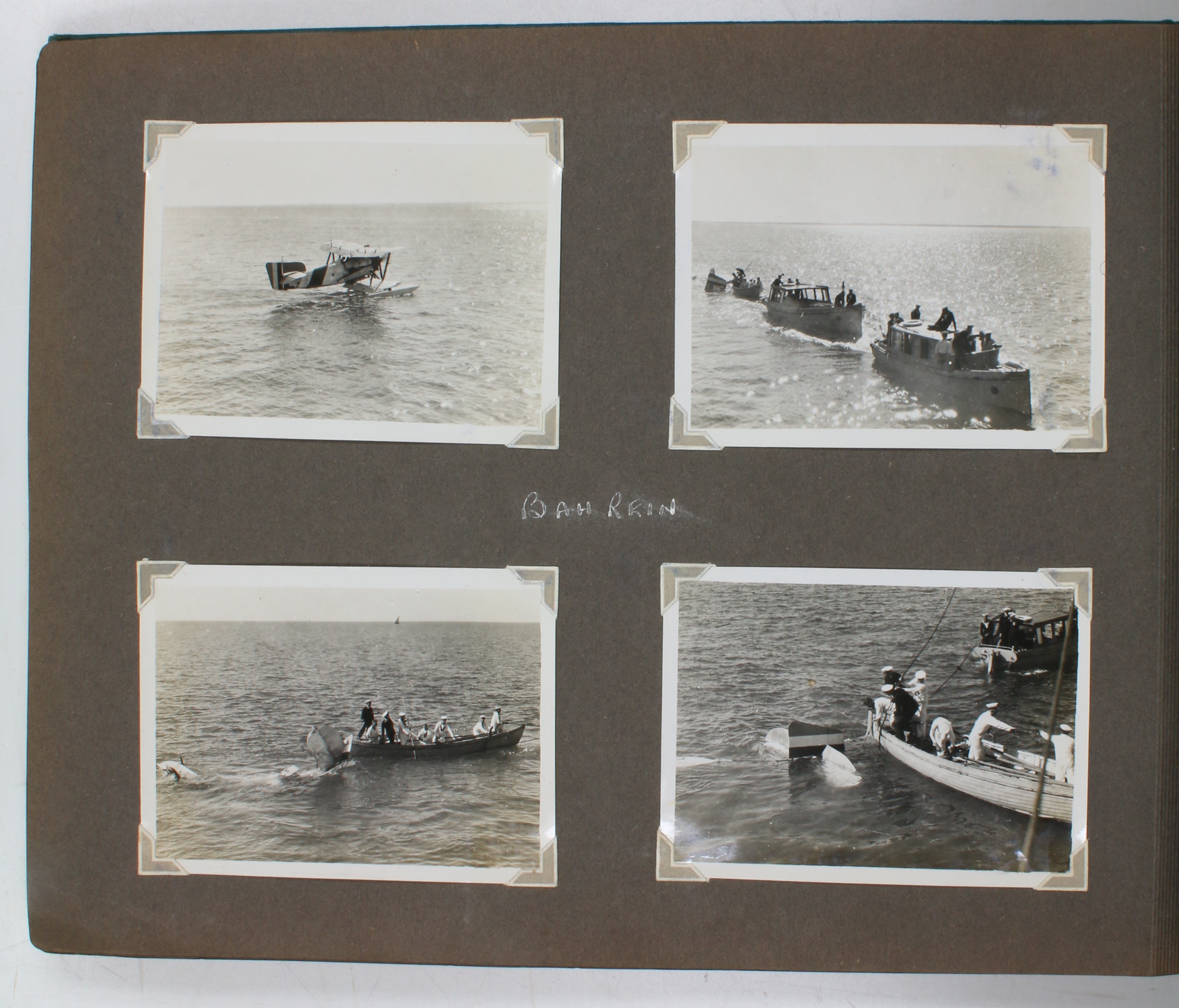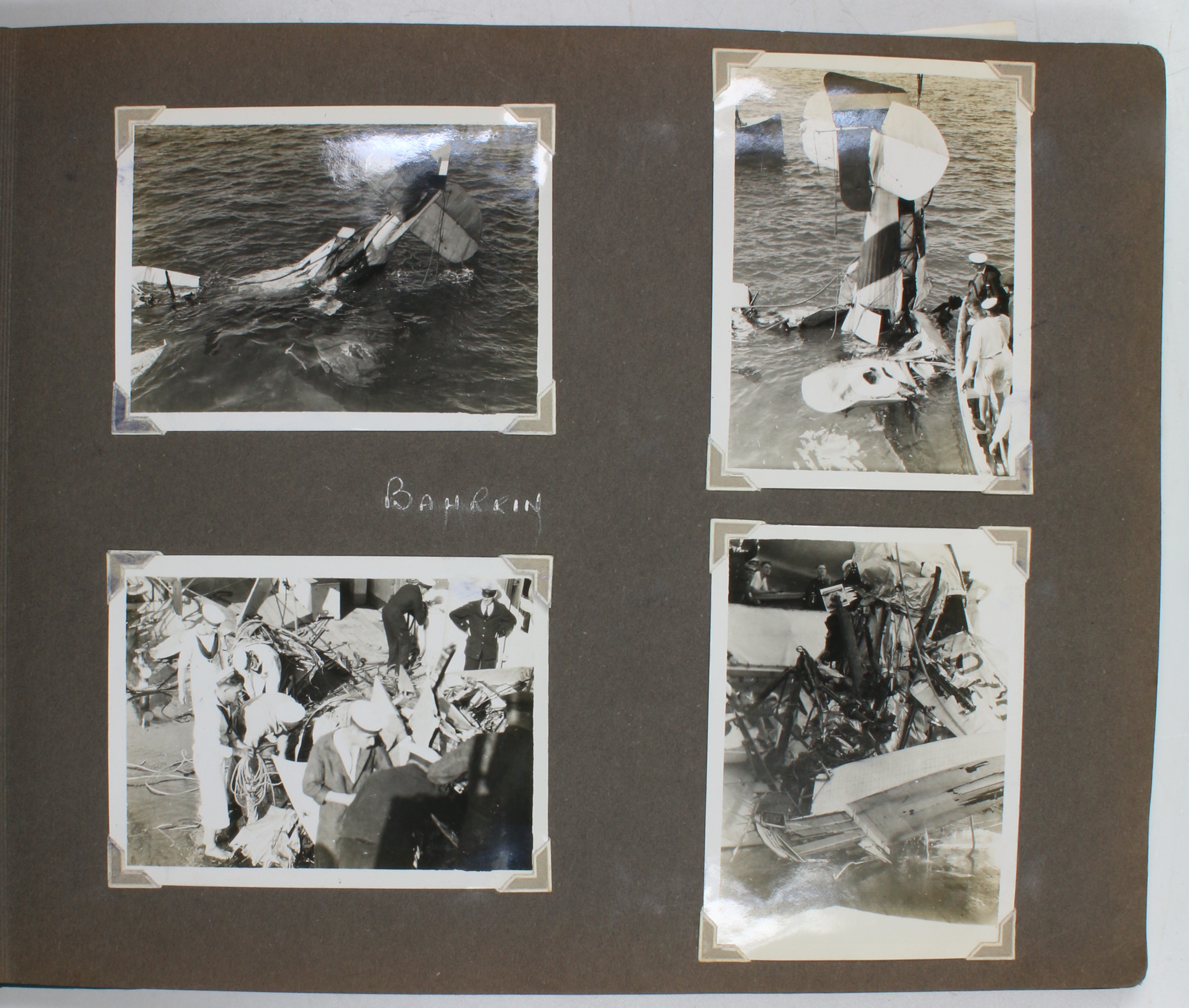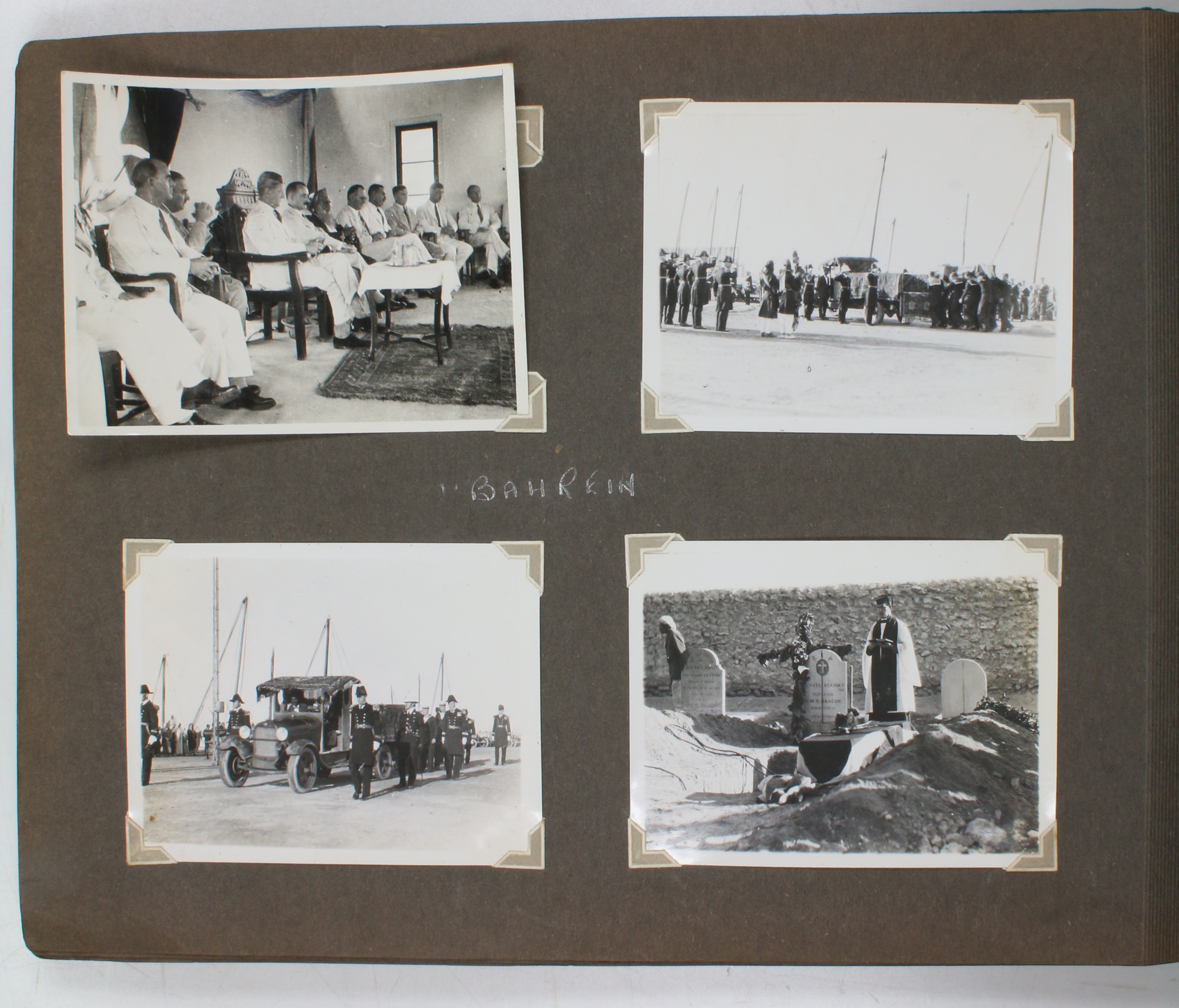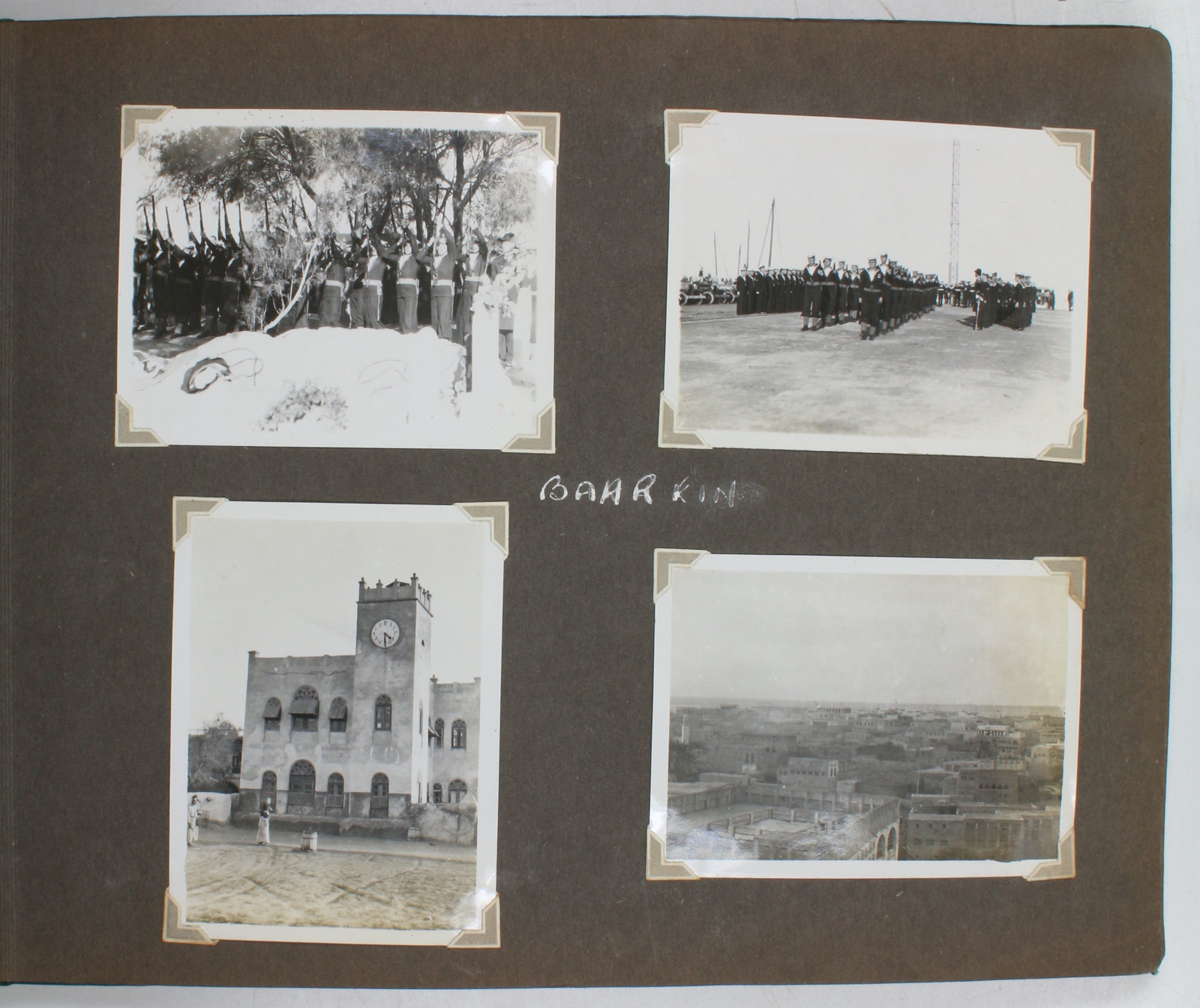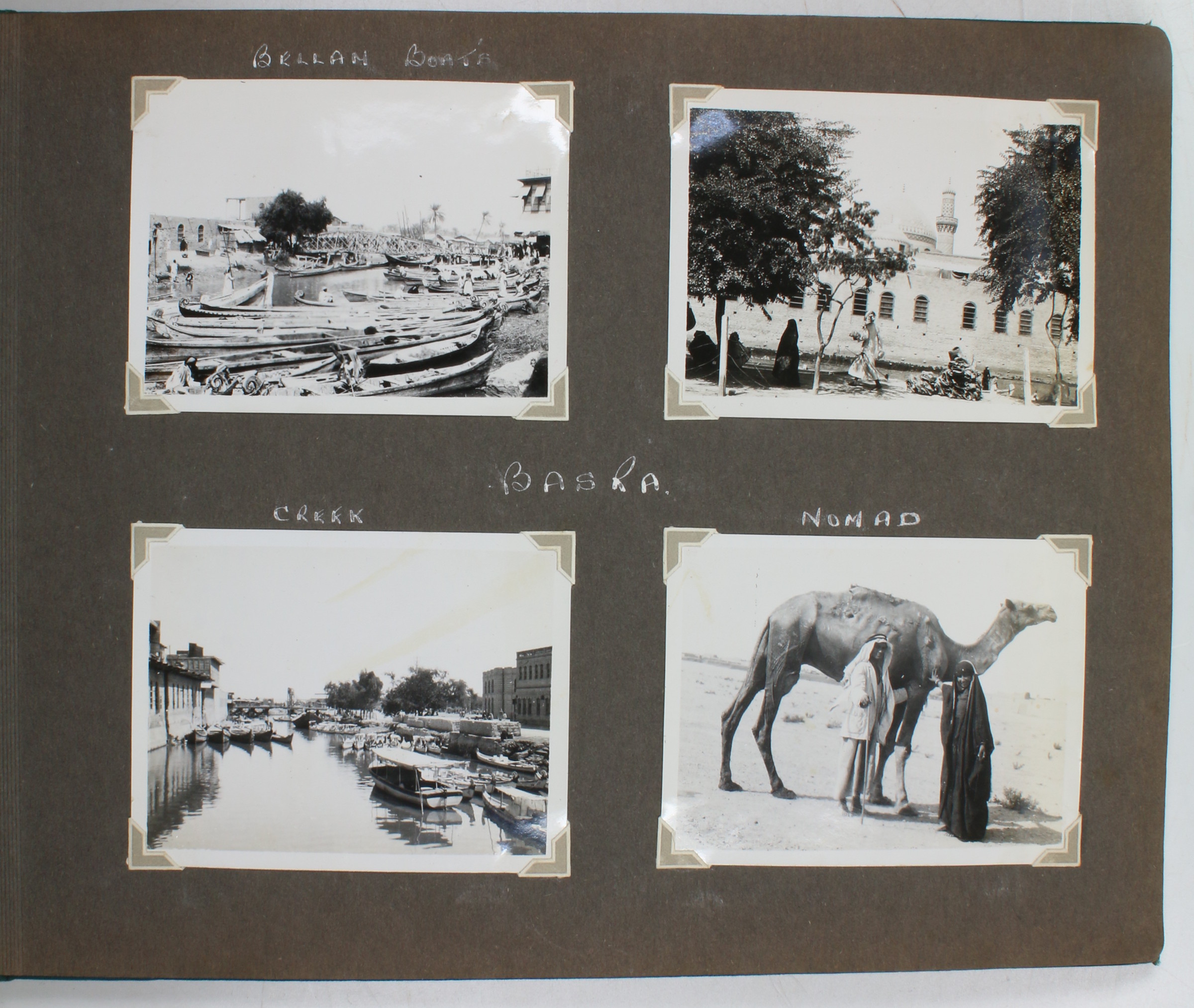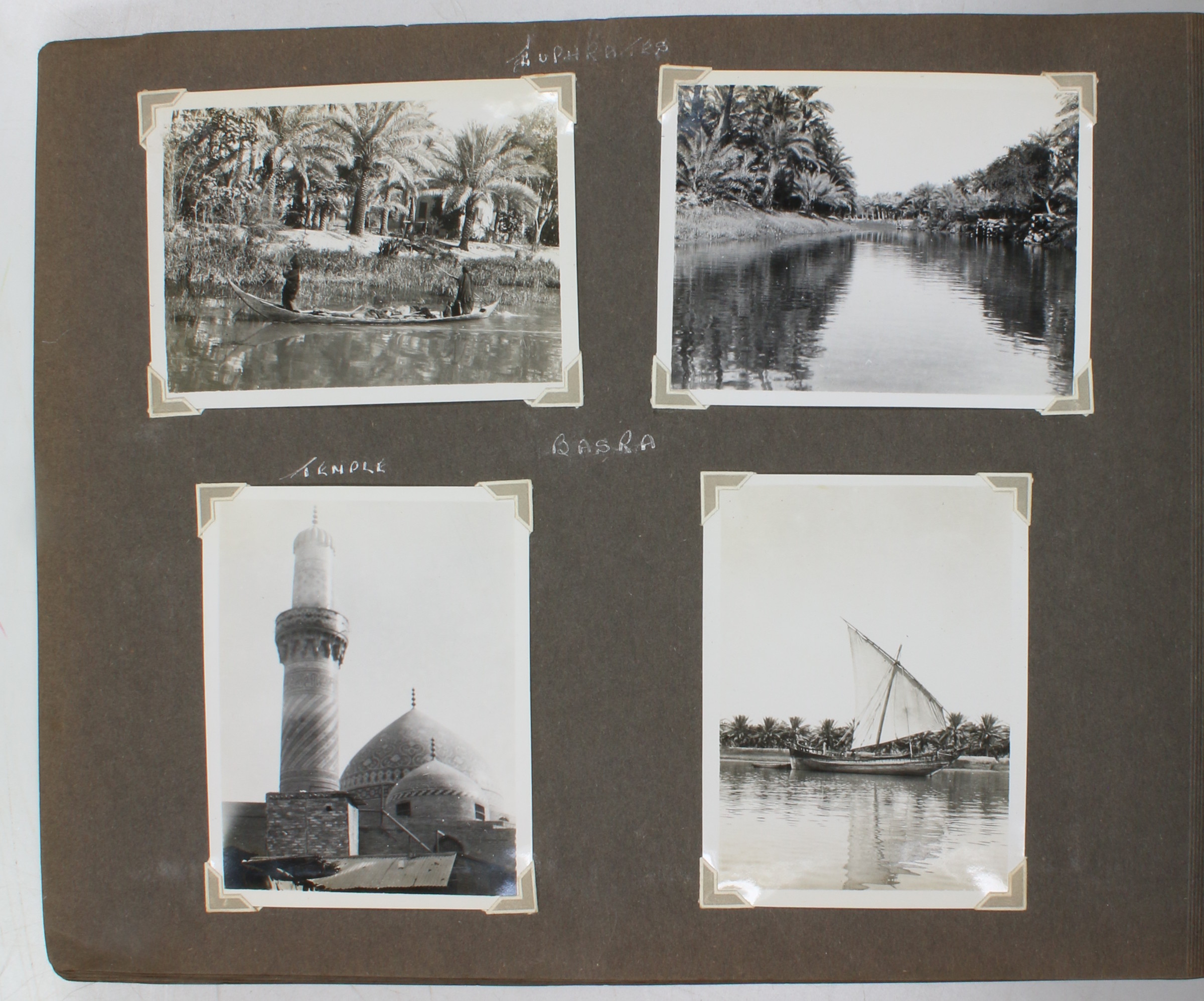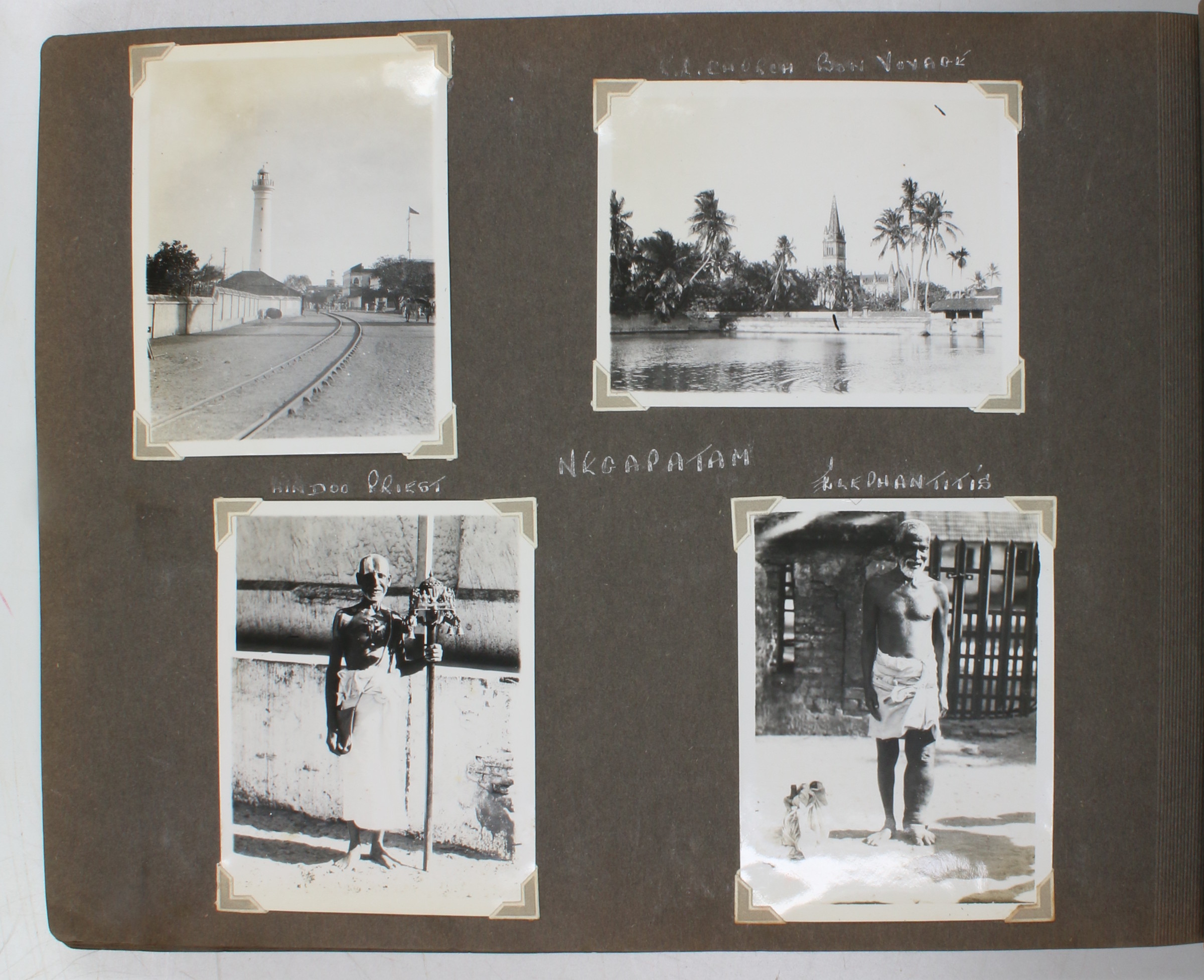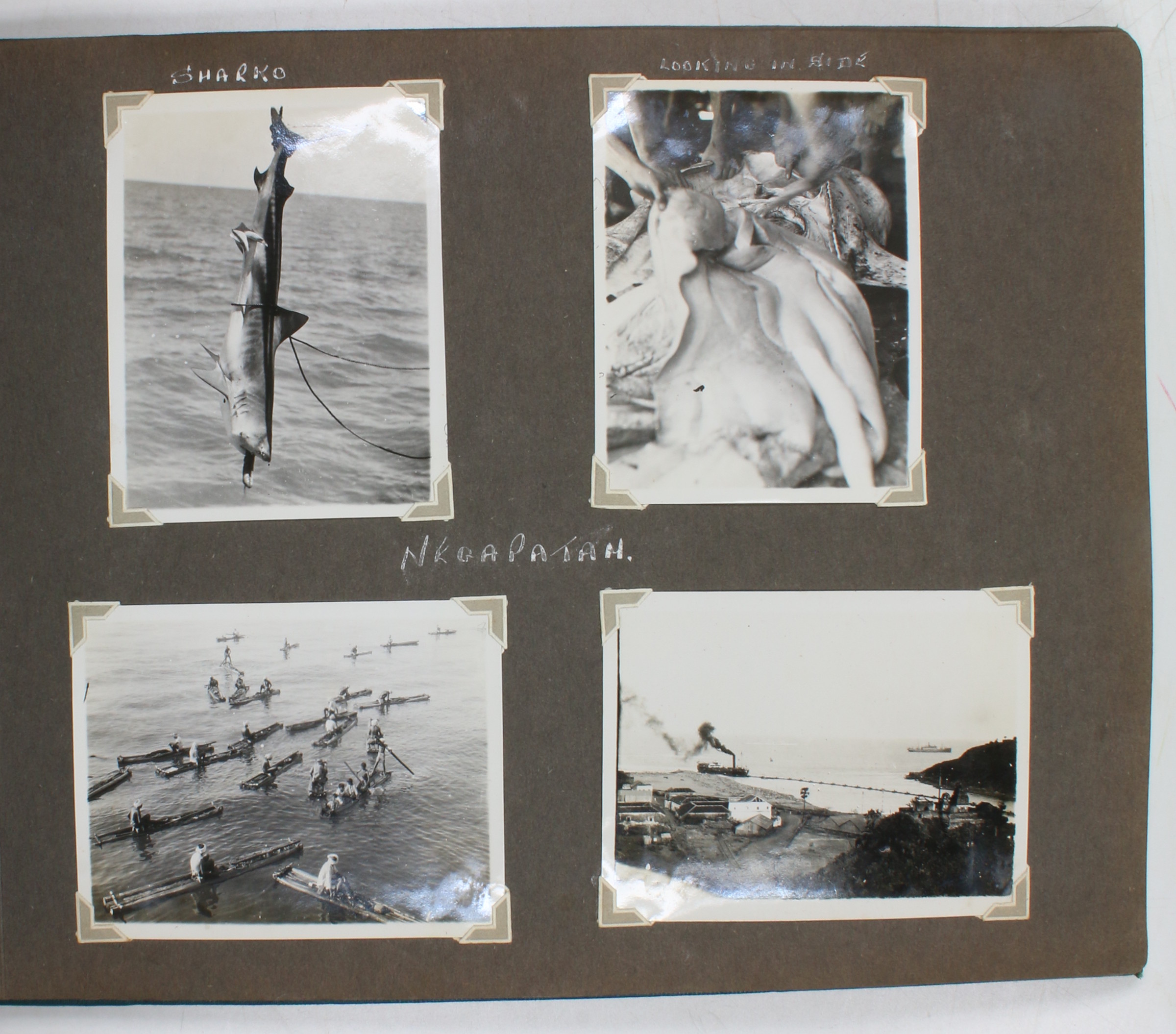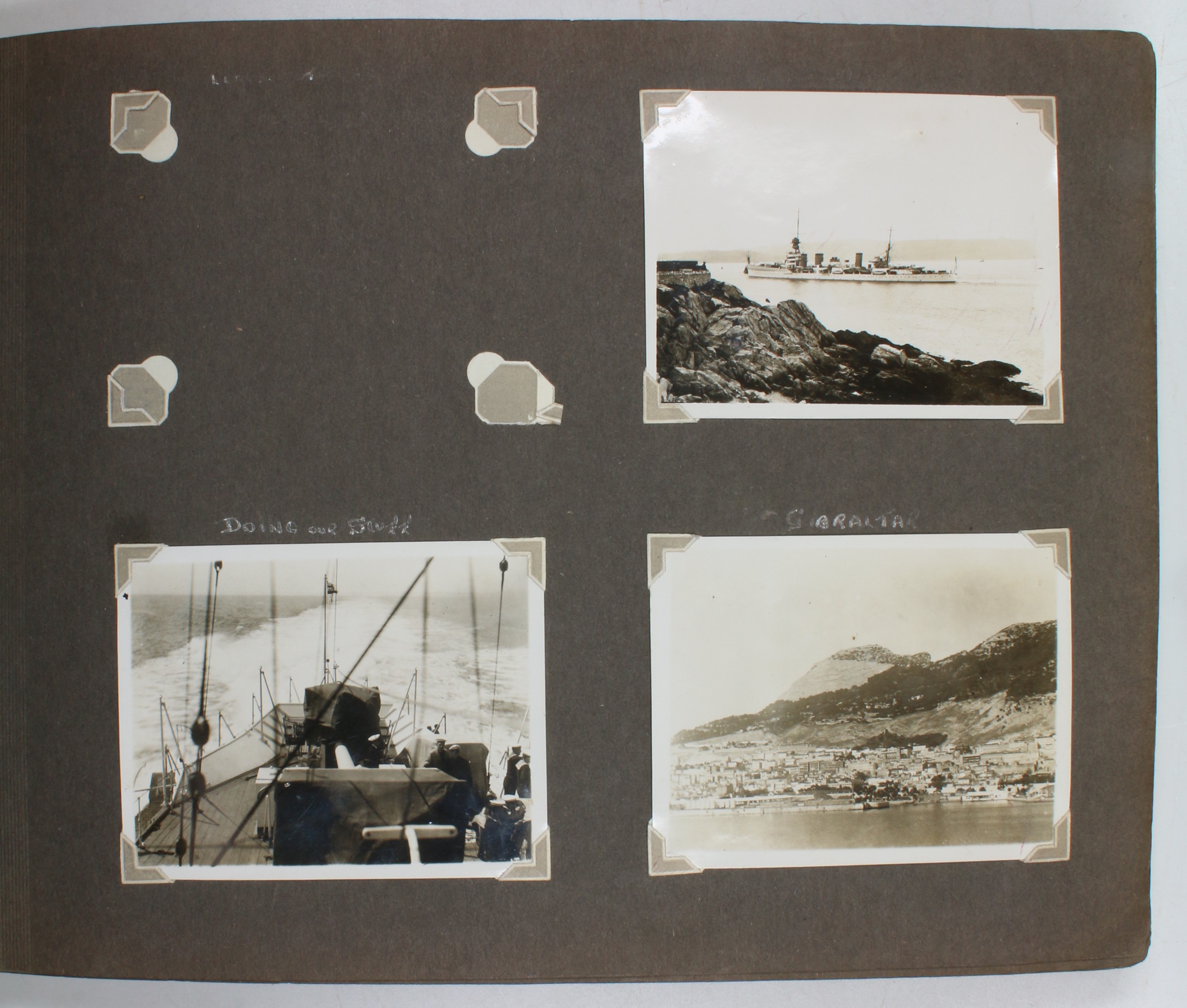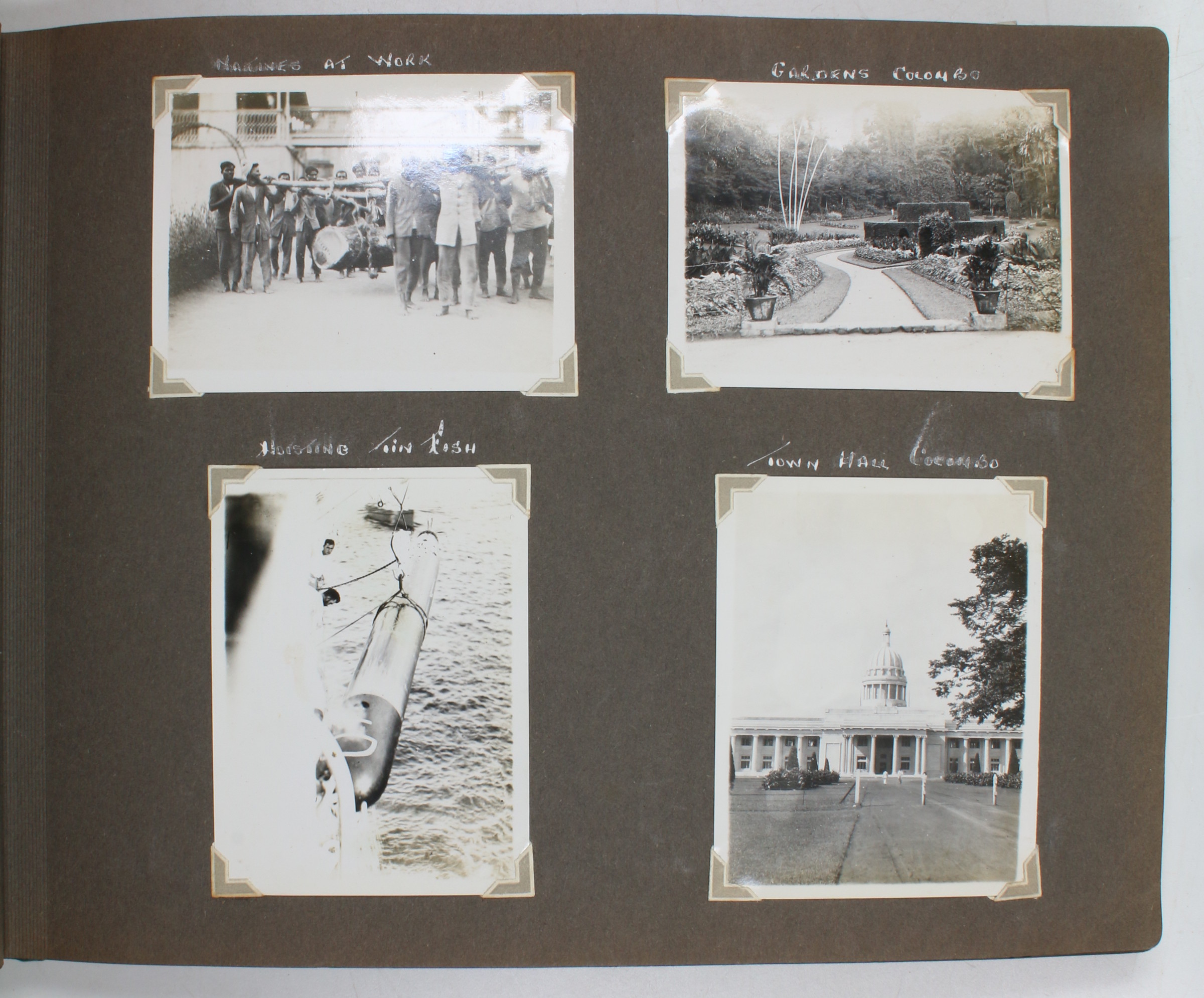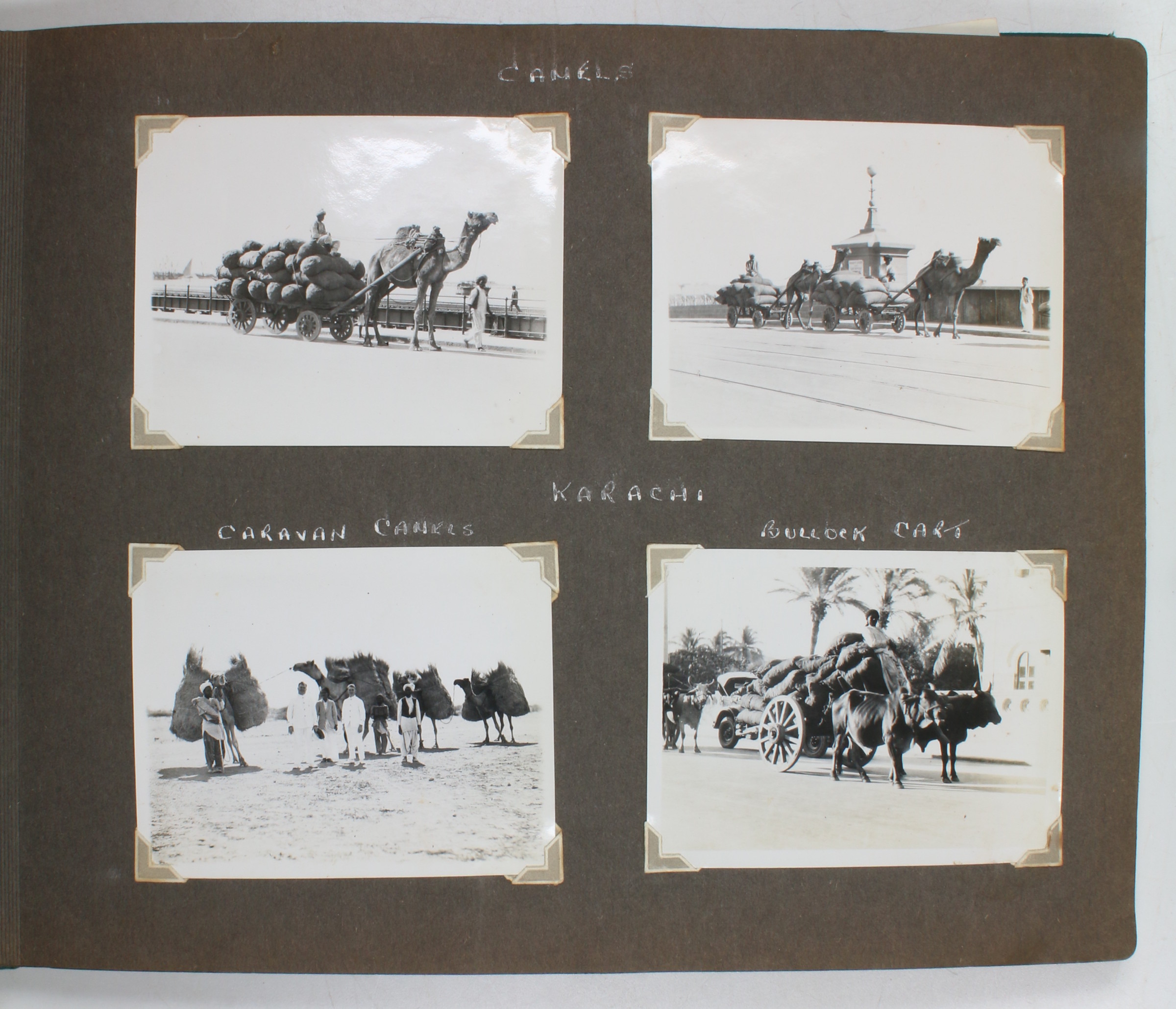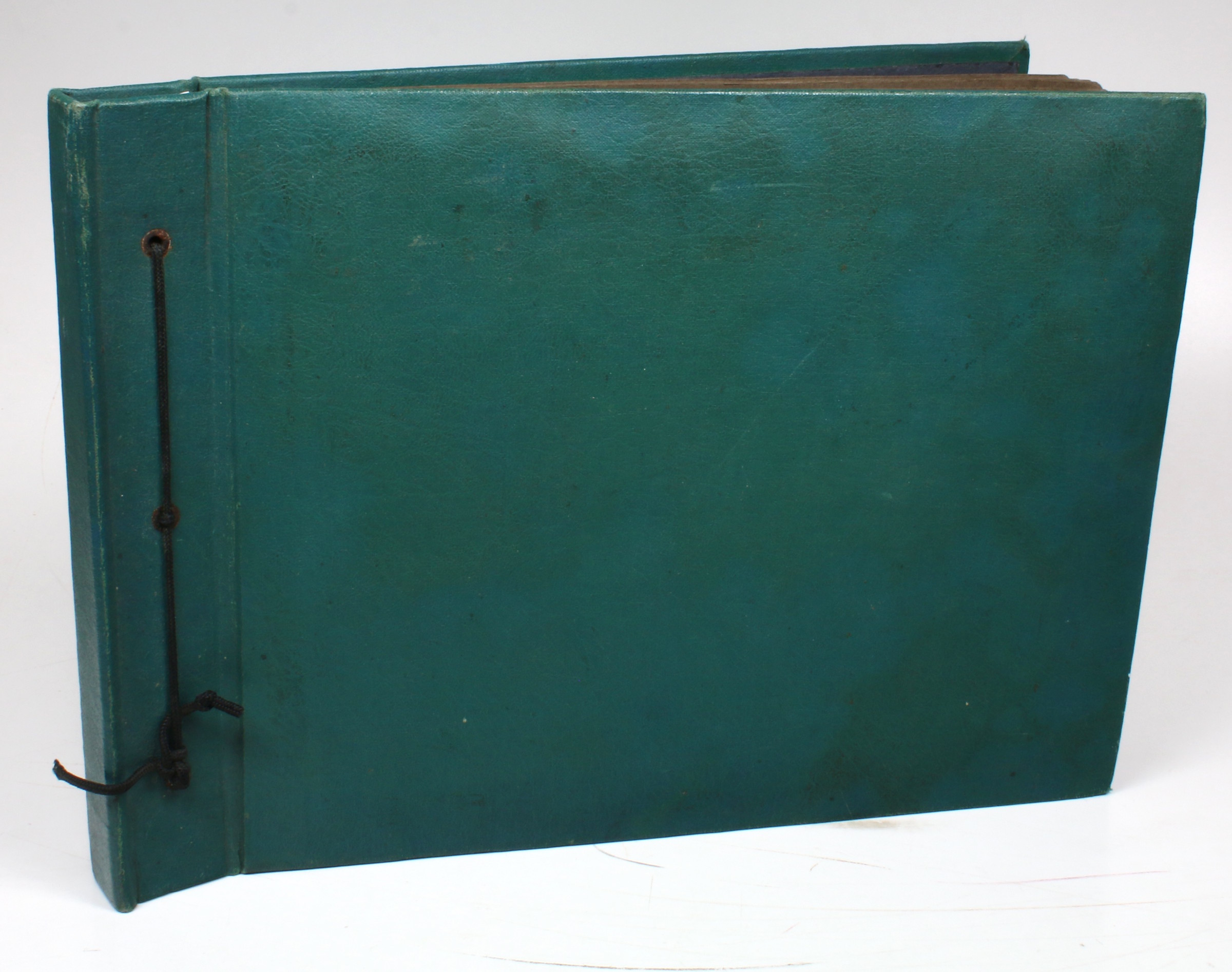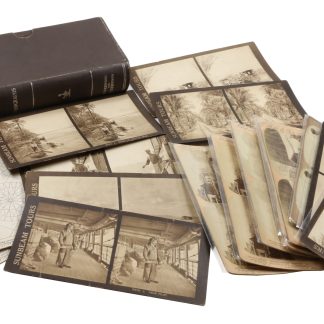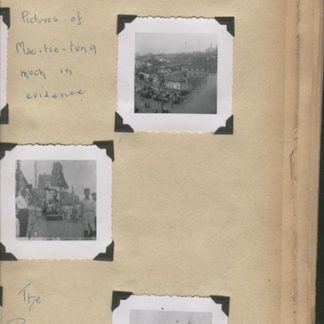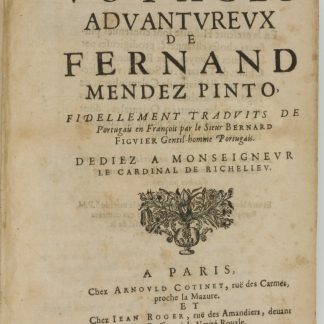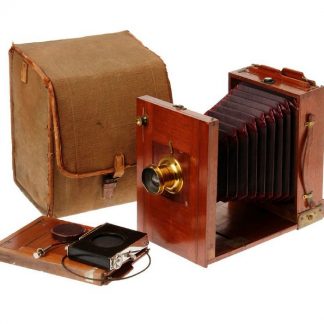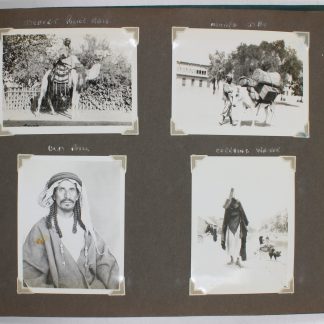One of the earliest photographs of Sheikh Saeed bin Maktoum and Sheikh Juma bin Maktoum, hitherto unrecorded
[The British Royal Navy in the Arabian Gulf and Indian Ocean].
Oblong folio (335 x 245 mm). 188 silver gelatin photographs, one hand-tinted, mostly 105 x 80 mm, mounted in photo corners with handwritten captions. Original green cloth binding with hand-drawn map of Africa, Europe, and Asia on the front pastedown labelled "England to Aden 4643 miles" and four small maps of Kuwait, Ceylon, Iraq, and India mounted on rear pastedown with hand-coloured borders in blue and orange.
€ 65,000.00
A previously unknown collection of unique photographs by an anonymous British serviceman, documenting an interwar deployment to Aden and featuring one of earliest known photographs of Sheikh Juma bin Maktoum bin Hasher Al Maktoum (b. 1891) and Sheikh Saeed bin Maktoum bin Hasher Al Maktoum (1878-1958) of Dubai. Early photographs of Dubai or its rulers are quite uncommon, making this an exceptionally important piece. Here, the brothers are shown touring a British Royal Navy cruiser. Sheikh Juma (on the left) was the founder of the Al Maktoum branch of the Dubai royal family; his brother, Sheikh Saeed (on the right), was the longest-tenured ruler of Dubai, and presided over many of the huge economic changes of the first half of the 20th century. Both were deeply important to the formation of Dubai as it is today, but relics of their lives are extremely scarce.
Another rare photograph captures the Sultan of Oman Said bin Taimur (1910-72) as a young man touring a British light cruiser no more than a few months after the start of his reign in 1932. At only twenty-one, Said inherited both the sultanate and the difficulties faced by his predecessor. Though his reign was not easy, he was famously successful in uniting the warring factions within the sultanate.
The photographer behind this collection was likely a serviceman based on the H.M.S. Emerald, an Emerald-class light cruiser of the Royal Navy which would go on to provide support service during the D-Day landings at Gold Beach in WWII, but spent much of her career in the Indian Ocean and the Gulf. The serviceman has snapped a shot of a Fairey Flycatcher pontoon plane with the registration number N9670 - the Flycatcher known to have been assigned to the Emerald - photographed from the deck, and the Emerald appears repeatedly throughout the collection. Though the Emerald had a long tenure in the Gulf, photographs of the crash of the same ill-fated Fairey Flycatcher N9670 date the collection to circa December 1931, and the appearance of the young Sultan of Oman can only have been taken after the start of his reign on the 10th of February, 1932, covering a reasonable span of six months or more. Additionally, the Hawkins-class heavy cruiser H.M.S. Effingham appears in tow at the East Indies Station Trincomalee, Sri Lanka, which could only have occurred in early 1932, as later that same year she was sent back to Britain as part of the Reserve Fleet.
The photographs of ship life are full of action: men bathing over the side in the warm waters off Gibraltar, views of the Suez Canal, the use of a "smoke box" on the ship to generate a smokescreen, and torpedo drills, one capturing a launched torpedo in motion. However, no small part of the collection is dedicated to rare early views of Bahrein, Oman, and Iran. Bahrain is introduced by the Flycatcher plane crash; the British desired to impress their allies among the local dignitaries in Bahrain with a demonstration of military power, and sent Flight Lt. Peter Dabney Heinemann out in the Flycatcher to machine-gun targets which had been floated in the sea just off Bahrain. Heinemann reportedly lost control and spun out, and was killed when the plane crashed into the sea. Seven photographs show the British retrieving the wreckage, and the following photographs show a funeral procession in Manama, the bed of a military truck laid out in carpets acts as a hearse, and the burial in the Old Christian Cemetery. Two more photographs show a cityscape view of Manama and the clock tower of the Church of Christ in Bahrein.
Photographs of Old Muscat show the al-Jalali and al-Mirani forts, the former then still in use as a prison, and a view of the city "from hill top". Rounding out the tour of the Gulf, two photographs show the Abadan oil refinery in Iran.
The photographer spent some time in the Indian Ocean, and made port at Columbo, Trincomalee, Anuradhapura, Kandy, and Diyatalawa in Sri Lanka, as well as Karachi, Negapatam, Visakhapatnam, Kolkata (Calcutta), Sittwe (Akyab), and Port Blair. In Karachi, several photographs show the city's newly constructed airship mast and the cavernous airship shed, built as one of the main "terminals" of Britain's Imperial Airship Communications Scheme. The mast and shed were never used: a decade before the more famous Hindenburg disaster, the inaugural flight of the Scheme saw the R101 Airship leave London bound for Karachi, only to crash over France, killing all but six of the fifty-four crew and passengers and effectively ending the Scheme. Also of interest are several photographs of the large prison at Fort Blair, and include a photograph of an inmate strapped onto a "flogging board".
A touch of light wear; a few photographs are apparently missing as shown by their empty mounts; however, in excellent condition. Altogether a tour de force, featuring incredibly rare portraits of dignitaries and numerous photographs of cities of the Arabian Gulf.

